Report: Key Challenges Facing Organizations in the Next Twenty Years
VerifiedAdded on 2023/04/25
|10
|912
|189
Report
AI Summary
This report provides an overview of the significant organizational challenges that businesses are expected to face over the next twenty years. It highlights five key areas: changes in human behavior, organizational culture, the role of technology in research, leadership effectiveness, and environmental iss...
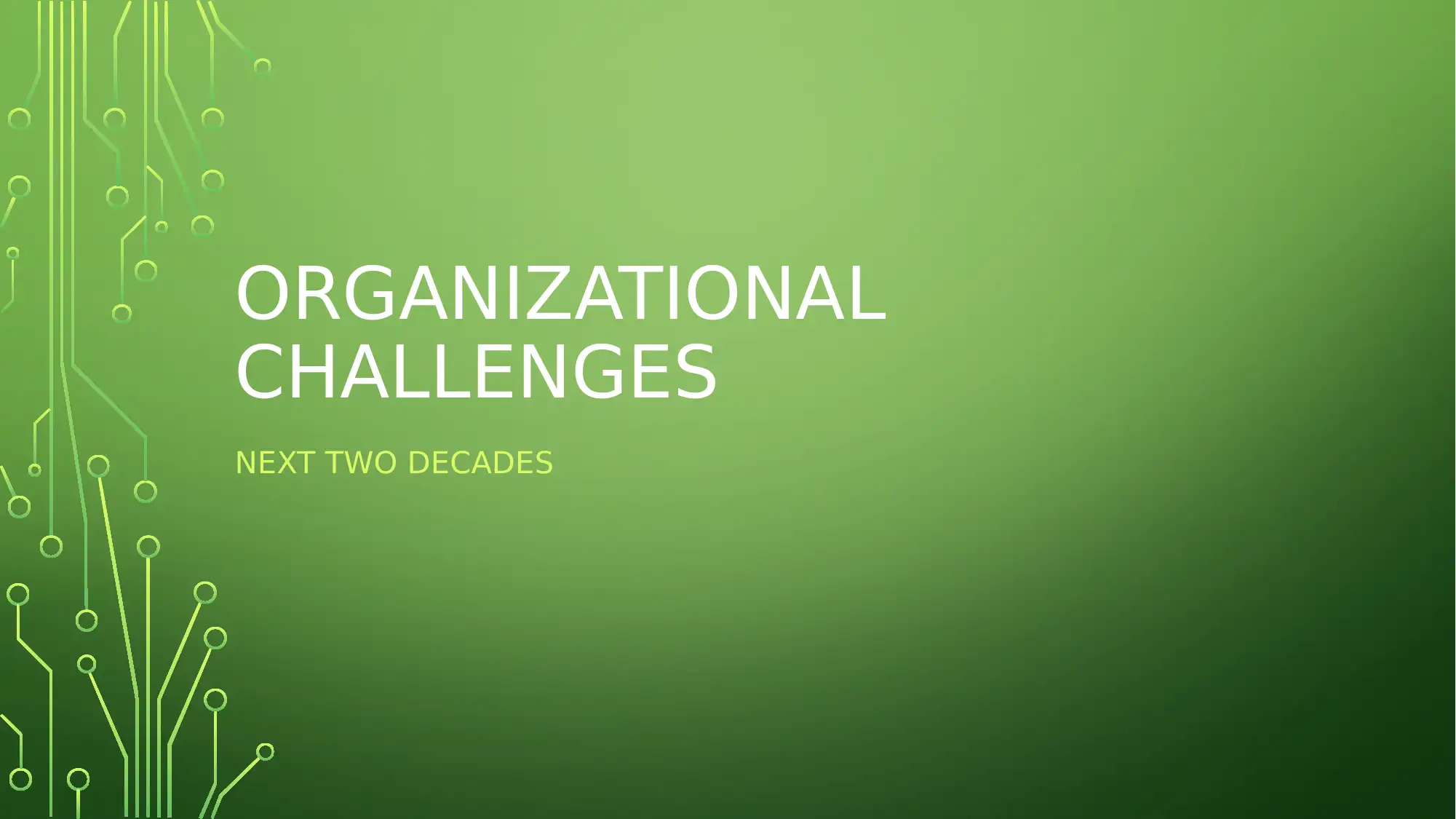
ORGANIZATIONAL
CHALLENGES
NEXT TWO DECADES
CHALLENGES
NEXT TWO DECADES
Paraphrase This Document
Need a fresh take? Get an instant paraphrase of this document with our AI Paraphraser
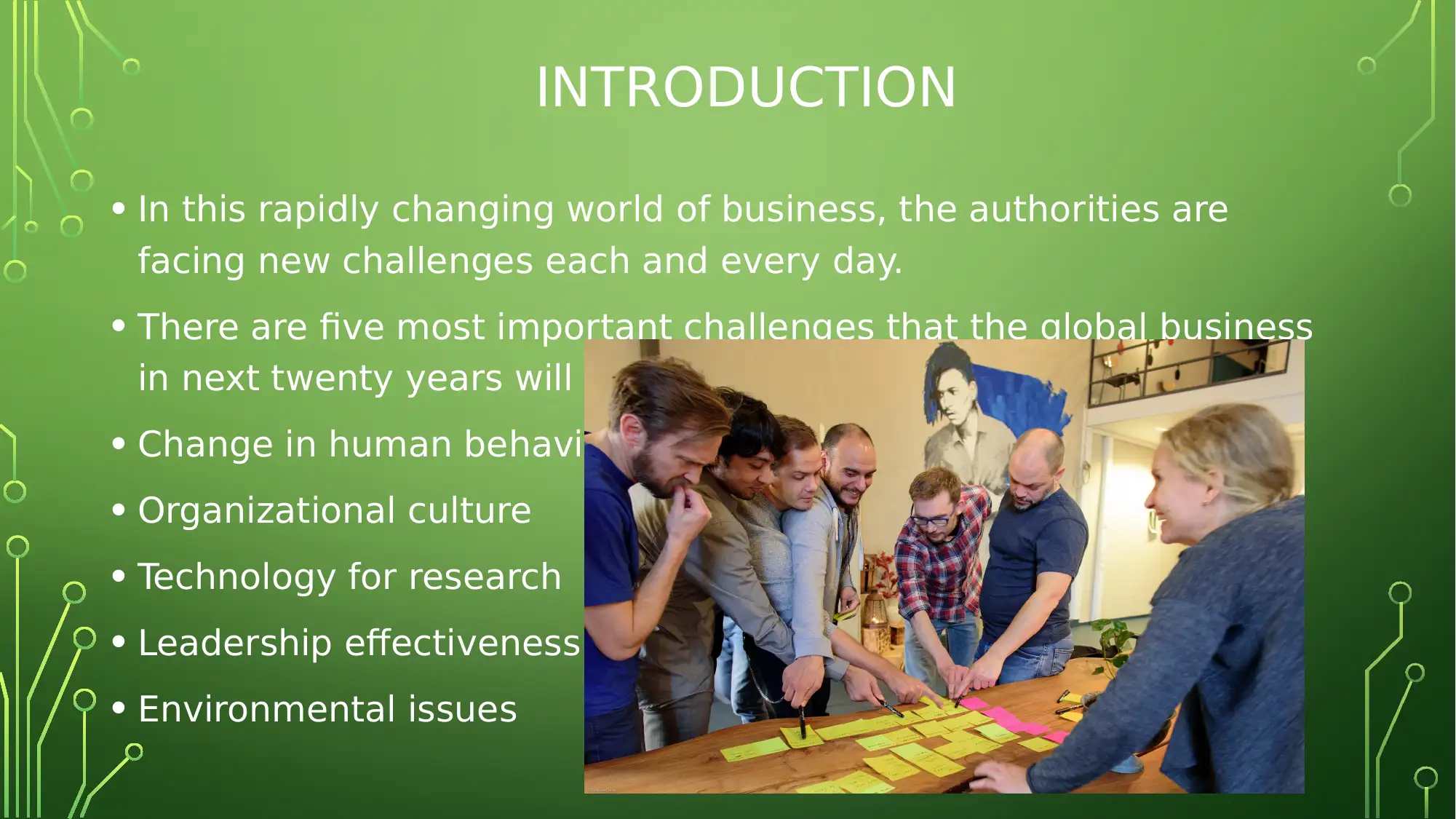
INTRODUCTION
• In this rapidly changing world of business, the authorities are
facing new challenges each and every day.
• There are five most important challenges that the global business
in next twenty years will face include-
• Change in human behaviour
• Organizational culture
• Technology for research
• Leadership effectiveness
• Environmental issues
• In this rapidly changing world of business, the authorities are
facing new challenges each and every day.
• There are five most important challenges that the global business
in next twenty years will face include-
• Change in human behaviour
• Organizational culture
• Technology for research
• Leadership effectiveness
• Environmental issues
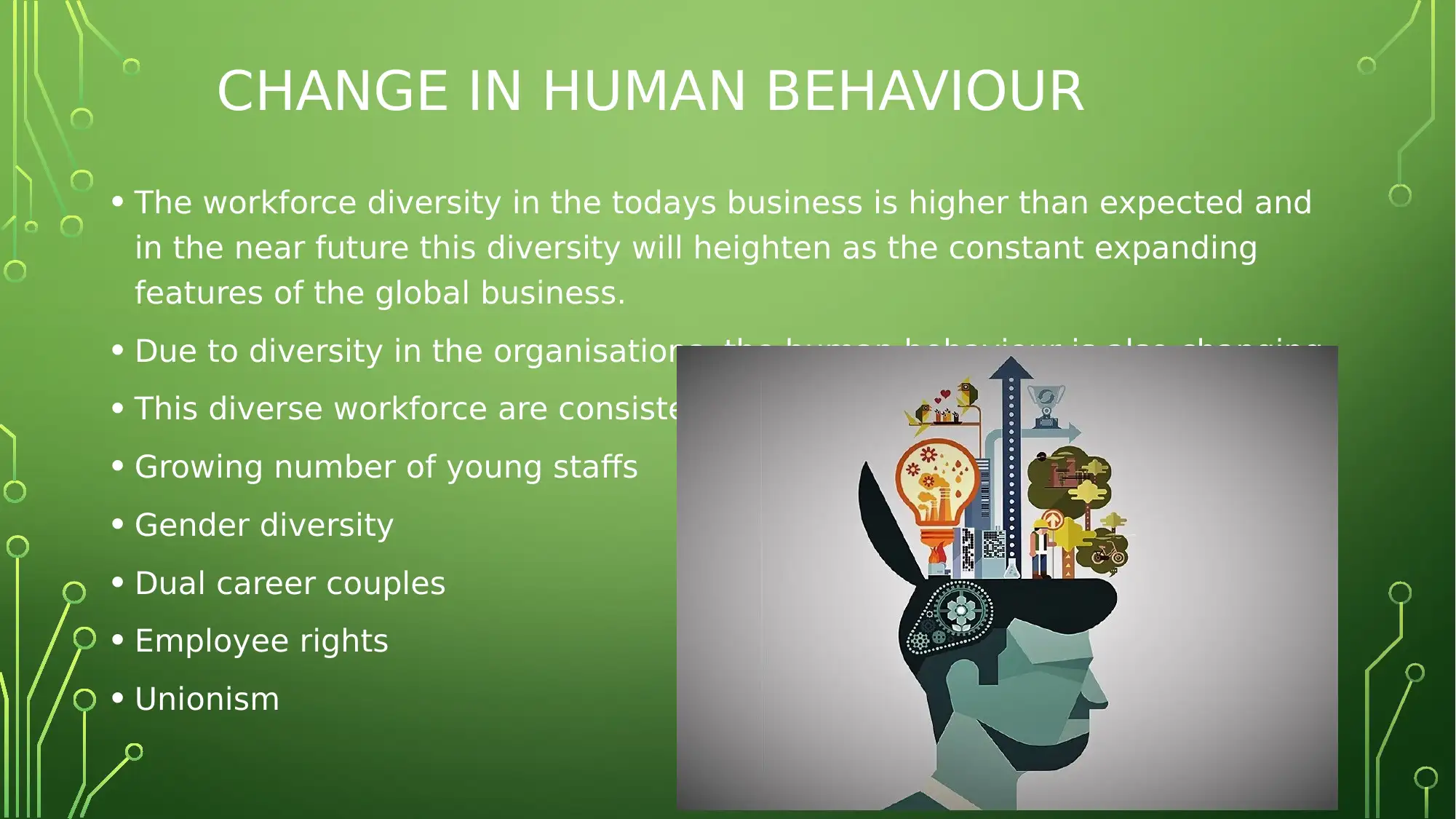
CHANGE IN HUMAN BEHAVIOUR
• The workforce diversity in the todays business is higher than expected and
in the near future this diversity will heighten as the constant expanding
features of the global business.
• Due to diversity in the organisations, the human behaviour is also changing.
• This diverse workforce are consisted of-
• Growing number of young staffs
• Gender diversity
• Dual career couples
• Employee rights
• Unionism
• The workforce diversity in the todays business is higher than expected and
in the near future this diversity will heighten as the constant expanding
features of the global business.
• Due to diversity in the organisations, the human behaviour is also changing.
• This diverse workforce are consisted of-
• Growing number of young staffs
• Gender diversity
• Dual career couples
• Employee rights
• Unionism
⊘ This is a preview!⊘
Do you want full access?
Subscribe today to unlock all pages.

Trusted by 1+ million students worldwide

ORGANIZATIONAL CULTURE
• As the cultural dimension theory by greet Hofstede has
marked, different countries have different national culture
which affect its organiostioanl culture also.
• This regulates the values, understanding, points of view,
reasoning of the employees.
• This cultural discrepancy will be enhanced as more
business will enter the emerging markets and will not be
able to survive unless localise its operations (Wirtz et al.
2016)
• Challenges lies in the fact that the companies need to
have high performance culture and innovation culture
continuum otherwise they will not survive.
• As the cultural dimension theory by greet Hofstede has
marked, different countries have different national culture
which affect its organiostioanl culture also.
• This regulates the values, understanding, points of view,
reasoning of the employees.
• This cultural discrepancy will be enhanced as more
business will enter the emerging markets and will not be
able to survive unless localise its operations (Wirtz et al.
2016)
• Challenges lies in the fact that the companies need to
have high performance culture and innovation culture
continuum otherwise they will not survive.
Paraphrase This Document
Need a fresh take? Get an instant paraphrase of this document with our AI Paraphraser
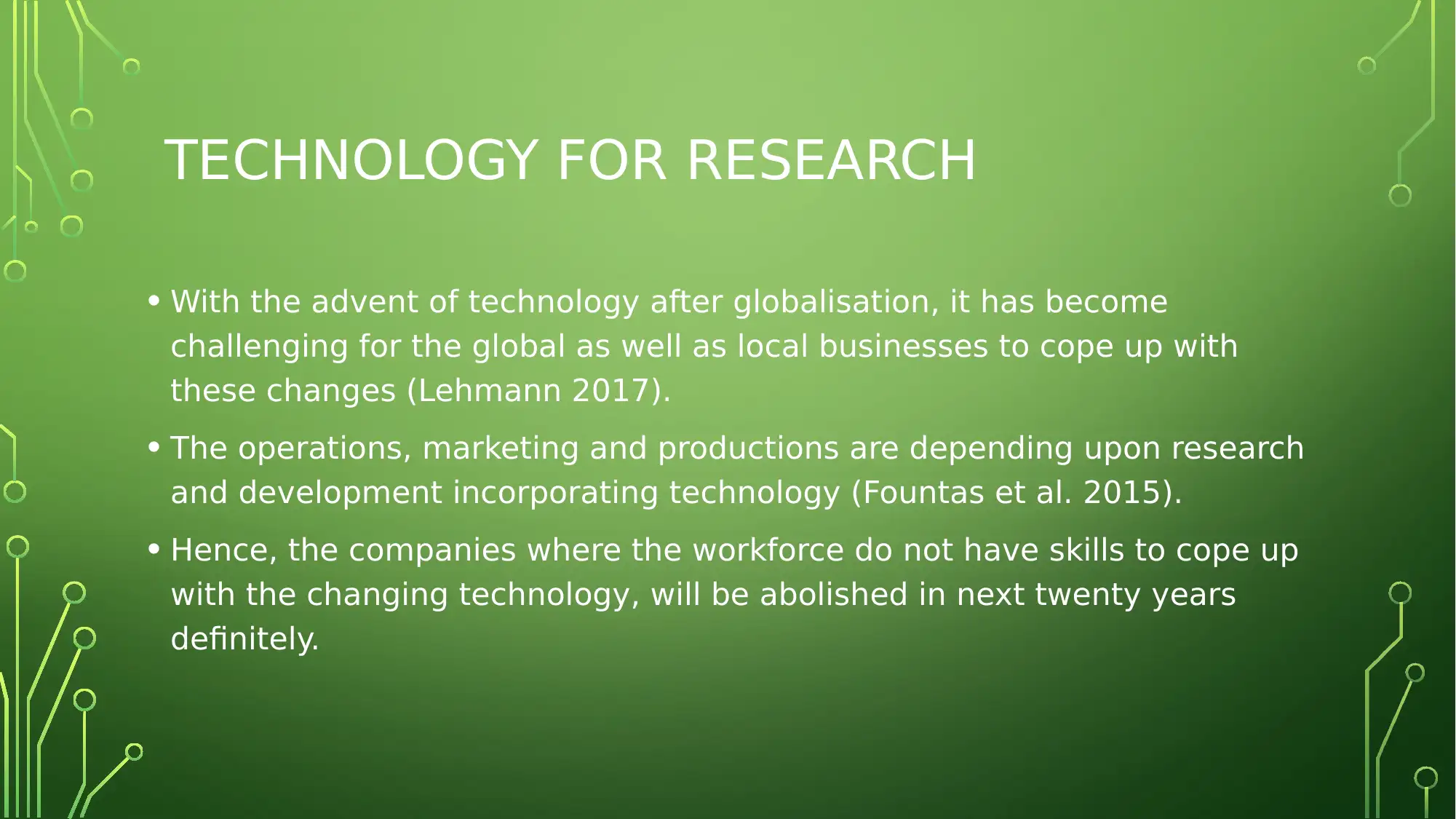
TECHNOLOGY FOR RESEARCH
• With the advent of technology after globalisation, it has become
challenging for the global as well as local businesses to cope up with
these changes (Lehmann 2017).
• The operations, marketing and productions are depending upon research
and development incorporating technology (Fountas et al. 2015).
• Hence, the companies where the workforce do not have skills to cope up
with the changing technology, will be abolished in next twenty years
definitely.
• With the advent of technology after globalisation, it has become
challenging for the global as well as local businesses to cope up with
these changes (Lehmann 2017).
• The operations, marketing and productions are depending upon research
and development incorporating technology (Fountas et al. 2015).
• Hence, the companies where the workforce do not have skills to cope up
with the changing technology, will be abolished in next twenty years
definitely.
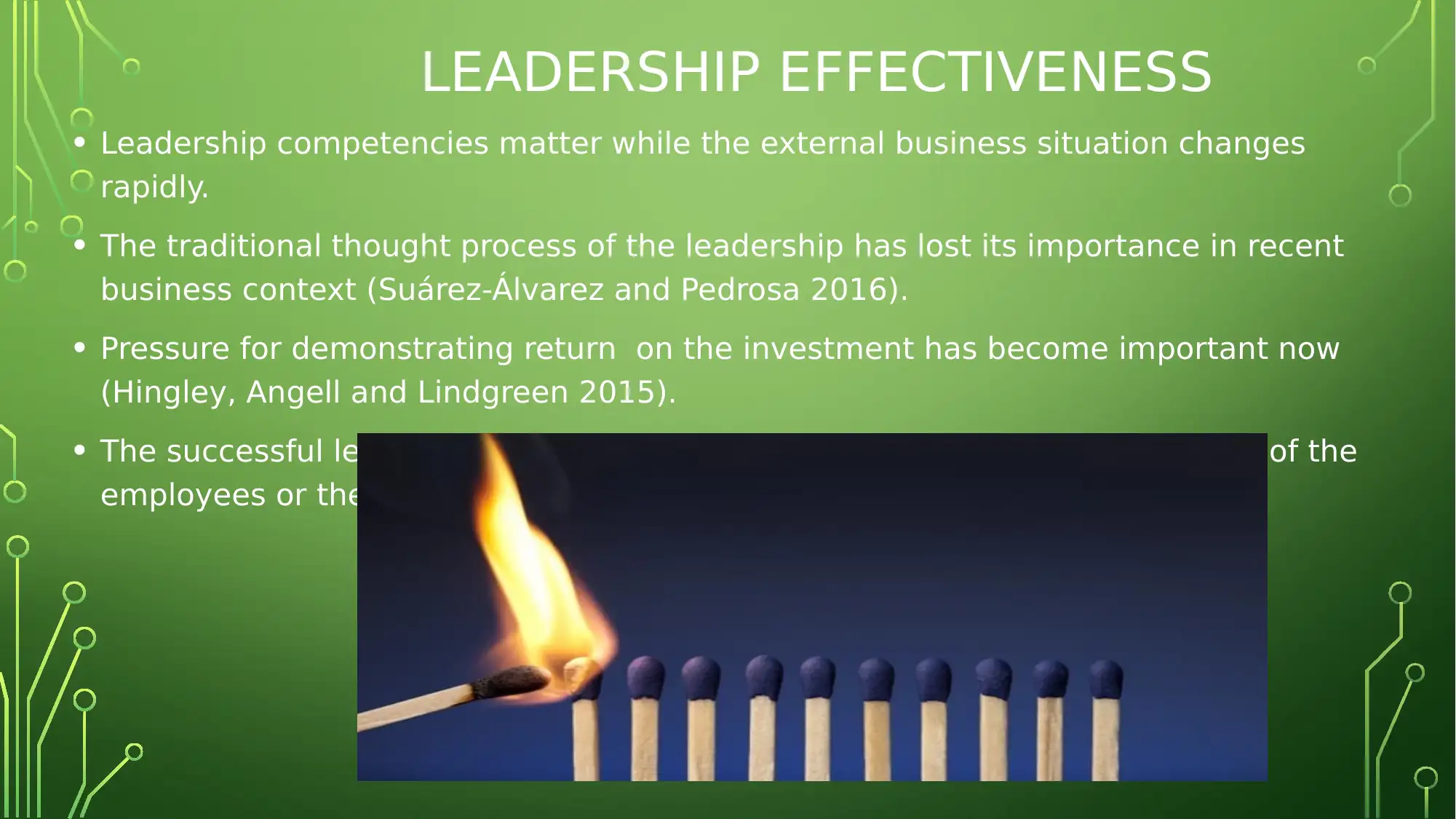
LEADERSHIP EFFECTIVENESS
• Leadership competencies matter while the external business situation changes
rapidly.
• The traditional thought process of the leadership has lost its importance in recent
business context (Suárez-Álvarez and Pedrosa 2016).
• Pressure for demonstrating return on the investment has become important now
(Hingley, Angell and Lindgreen 2015).
• The successful leaders are finding new ways of coping up with the demands of the
employees or the other stakeholders.
• Leadership competencies matter while the external business situation changes
rapidly.
• The traditional thought process of the leadership has lost its importance in recent
business context (Suárez-Álvarez and Pedrosa 2016).
• Pressure for demonstrating return on the investment has become important now
(Hingley, Angell and Lindgreen 2015).
• The successful leaders are finding new ways of coping up with the demands of the
employees or the other stakeholders.
⊘ This is a preview!⊘
Do you want full access?
Subscribe today to unlock all pages.

Trusted by 1+ million students worldwide

ENVIRONMENTAL ISSUES
• Business responsibility towards society includes care
for ecology and balance of nature.
• Most of the natural resources have become scarce in
the present scenario which may not exist in the next
twenty years.
• according to Pensupa et al. (2017) therefore, the
companies which have not yet taken initiative or the
sustainable growth will definitely face issues (Fountas
et al. 2015).
• The creation of ecological standards and reducing the
pollution level through wastes cannot survive the
recent awareness drive for the environment.
• Business responsibility towards society includes care
for ecology and balance of nature.
• Most of the natural resources have become scarce in
the present scenario which may not exist in the next
twenty years.
• according to Pensupa et al. (2017) therefore, the
companies which have not yet taken initiative or the
sustainable growth will definitely face issues (Fountas
et al. 2015).
• The creation of ecological standards and reducing the
pollution level through wastes cannot survive the
recent awareness drive for the environment.
Paraphrase This Document
Need a fresh take? Get an instant paraphrase of this document with our AI Paraphraser
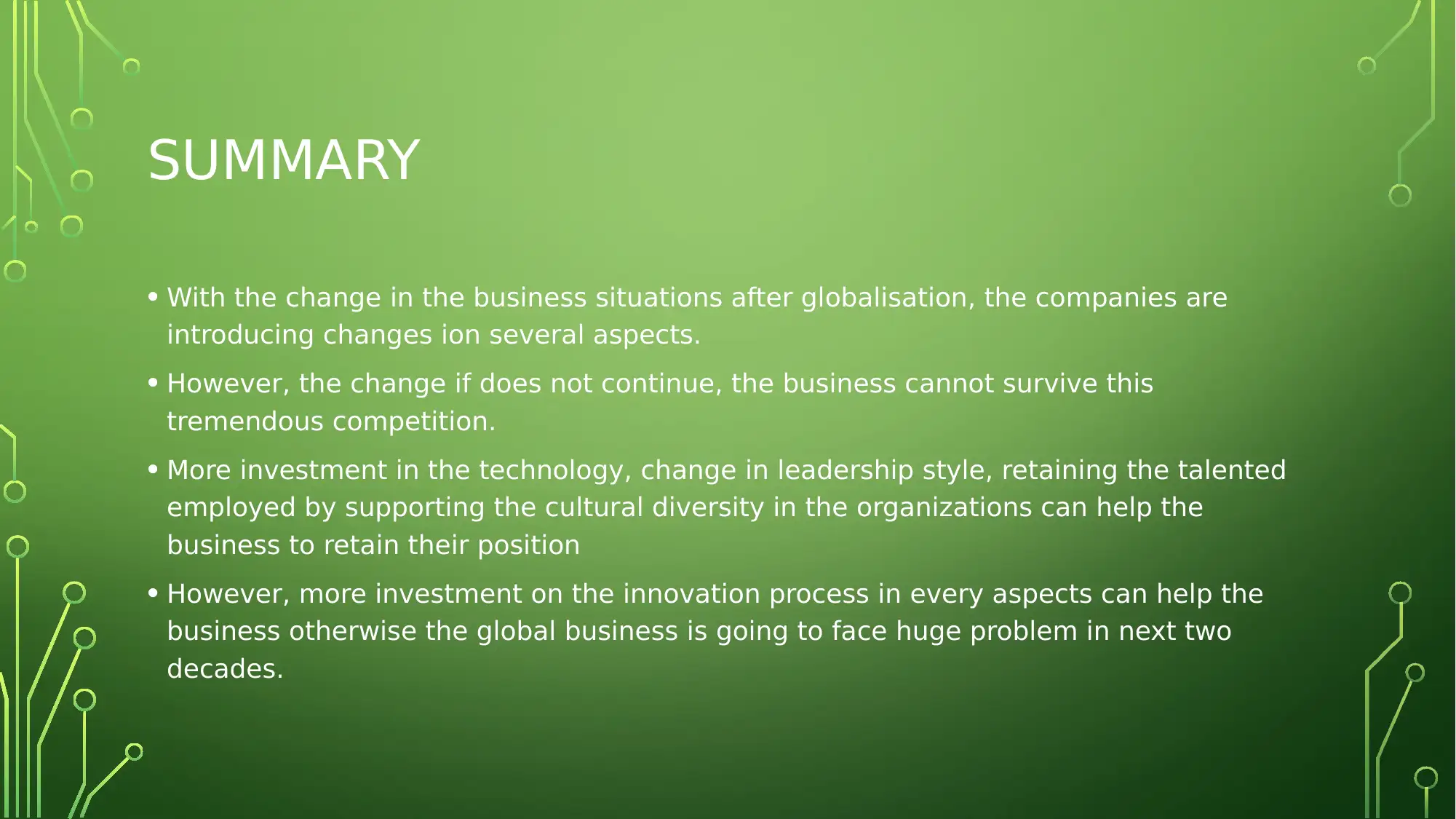
SUMMARY
• With the change in the business situations after globalisation, the companies are
introducing changes ion several aspects.
• However, the change if does not continue, the business cannot survive this
tremendous competition.
• More investment in the technology, change in leadership style, retaining the talented
employed by supporting the cultural diversity in the organizations can help the
business to retain their position
• However, more investment on the innovation process in every aspects can help the
business otherwise the global business is going to face huge problem in next two
decades.
• With the change in the business situations after globalisation, the companies are
introducing changes ion several aspects.
• However, the change if does not continue, the business cannot survive this
tremendous competition.
• More investment in the technology, change in leadership style, retaining the talented
employed by supporting the cultural diversity in the organizations can help the
business to retain their position
• However, more investment on the innovation process in every aspects can help the
business otherwise the global business is going to face huge problem in next two
decades.

REFERENCES:
• Fountas, S., Carli, G., Sørensen, C.G., Tsiropoulos, Z., Cavalaris, C., Vatsanidou, A., Liakos, B., Canavari, M., Wiebensohn, J. and Tisserye, B.,
2015. Farm management information systems: Current situation and future perspectives. Computers and Electronics in Agriculture, 115,
pp.40-50.
• Hingley, M., Angell, R. and Lindgreen, A., 2015. The current situation and future conceptualization of power in industrial markets. Industrial
Marketing Management, 48, pp.226-230.
• Lehmann, O.F., 2017. Customer Projects: What is the Future of the Business?'. PM World Journal, 4(2).
• Peng, M.W., 2017. Cultures, institutions, and strategic choices: Toward an institutional perspective on business strategy. The Blackwell
handbook of cross‐cultural management, pp.52-66.
• Pensupa, N., Leu, S.Y., Hu, Y., Du, C., Liu, H., Jing, H., Wang, H. and Lin, C.S.K., 2017. Recent trends in sustainable textile waste recycling
methods: current situation and future prospects. In Chemistry and Chemical Technologies in Waste Valorization (pp. 189-228). Springer,
Cham.
• Suárez-Álvarez, J. and Pedrosa, I., 2016. The assessment of entrepreneurial personality: The current situation and future directions. Papeles
del Psicólogo, 37(1), pp.62-68.
• Wirtz, B.W., Pistoia, A., Ullrich, S. and Göttel, V., 2016. Business models: Origin, development and future research perspectives. Long range
planning, 49(1), pp.36-54.
• Fountas, S., Carli, G., Sørensen, C.G., Tsiropoulos, Z., Cavalaris, C., Vatsanidou, A., Liakos, B., Canavari, M., Wiebensohn, J. and Tisserye, B.,
2015. Farm management information systems: Current situation and future perspectives. Computers and Electronics in Agriculture, 115,
pp.40-50.
• Hingley, M., Angell, R. and Lindgreen, A., 2015. The current situation and future conceptualization of power in industrial markets. Industrial
Marketing Management, 48, pp.226-230.
• Lehmann, O.F., 2017. Customer Projects: What is the Future of the Business?'. PM World Journal, 4(2).
• Peng, M.W., 2017. Cultures, institutions, and strategic choices: Toward an institutional perspective on business strategy. The Blackwell
handbook of cross‐cultural management, pp.52-66.
• Pensupa, N., Leu, S.Y., Hu, Y., Du, C., Liu, H., Jing, H., Wang, H. and Lin, C.S.K., 2017. Recent trends in sustainable textile waste recycling
methods: current situation and future prospects. In Chemistry and Chemical Technologies in Waste Valorization (pp. 189-228). Springer,
Cham.
• Suárez-Álvarez, J. and Pedrosa, I., 2016. The assessment of entrepreneurial personality: The current situation and future directions. Papeles
del Psicólogo, 37(1), pp.62-68.
• Wirtz, B.W., Pistoia, A., Ullrich, S. and Göttel, V., 2016. Business models: Origin, development and future research perspectives. Long range
planning, 49(1), pp.36-54.
⊘ This is a preview!⊘
Do you want full access?
Subscribe today to unlock all pages.

Trusted by 1+ million students worldwide

1 out of 10
Related Documents
Your All-in-One AI-Powered Toolkit for Academic Success.
+13062052269
info@desklib.com
Available 24*7 on WhatsApp / Email
![[object Object]](/_next/static/media/star-bottom.7253800d.svg)
Unlock your academic potential
© 2024 | Zucol Services PVT LTD | All rights reserved.




